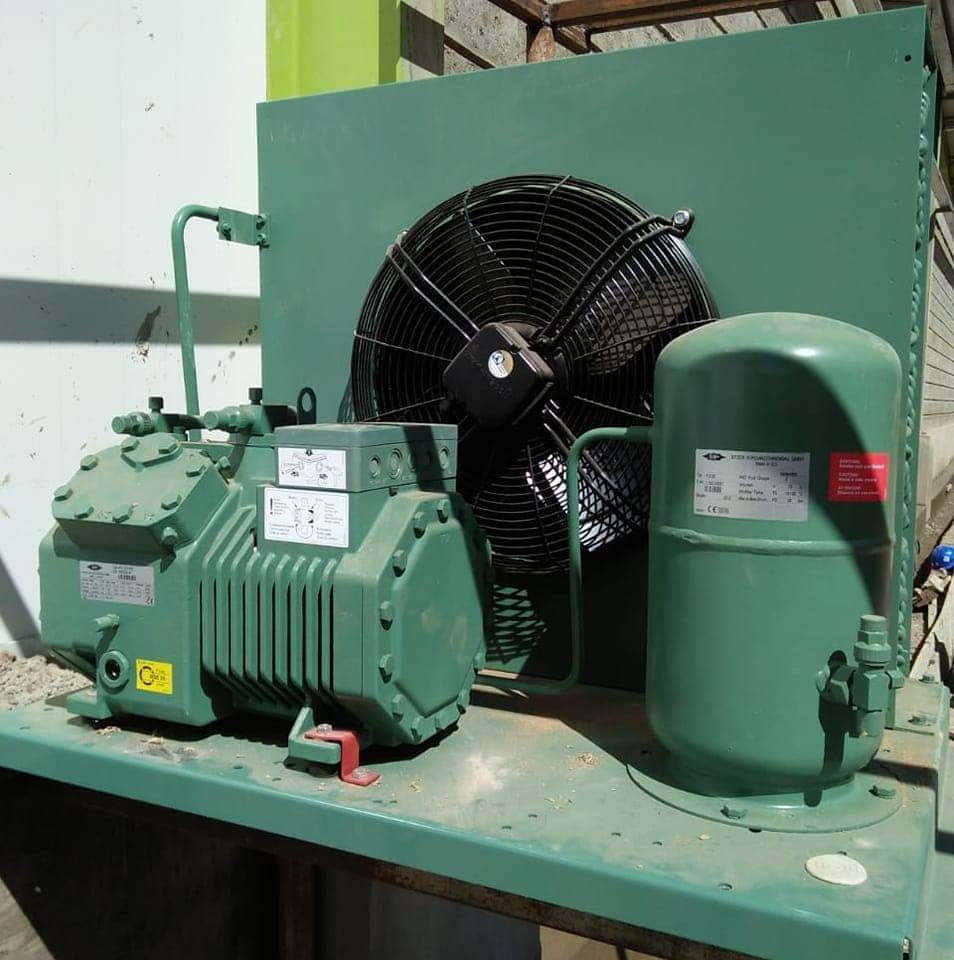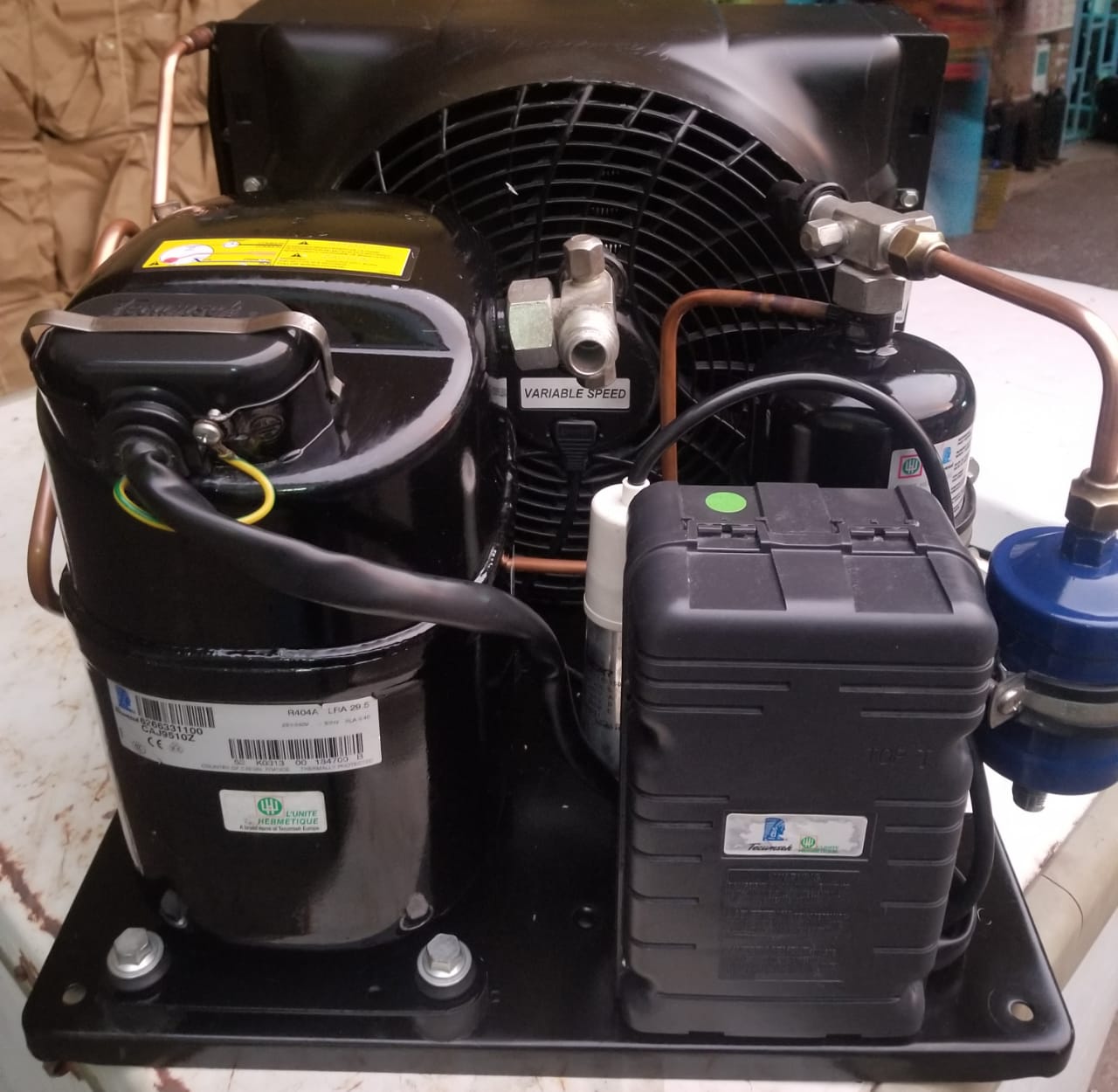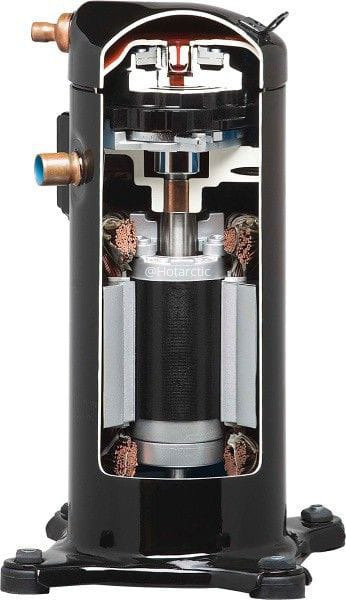Types of Refrigeration Compressors
Compressors are the heart of any Refrigeration, Air Conditioning, or ventilation system. A refrigeration compressor compresses a Refrigerant gas, to high pressure, as it prepares to go through a condenser, where cooling begins.
While refrigeration compressors essentially have the same job, they work in different ways.
Below are the classifications of refrigeration compressors available at HotArctic heating and cooling and how they work.
Classification of Refrigeration compressors according to Size
Open Refrigeration compressor.
An open compressor is large and has no shell.
The motor and the compressor housing are housed separately. The open compressor has no shell/ seal increasing the risk of the Refrigerant gas leaking. However, the components are easily accessible for maintenance
Semi-hermetic refrigeration compressor.

A semi-hermetic compressor is medium and has a two piece cover that can be opened for servicing.
Hermetic refrigeration compressor

A hermetic compressor is a smaller compressor with a Closed shell.
The motor and the compressor housing are housed inside a shell that is welded providing a seal against the surrounding.
Classification based on their internal working mechanism
a) Positive displacement compression
b) Dynamic compression.
Positive displacement compression.
The working principle of positive displacement and dynamic compressors differ significantly.
In positive displacement, the compressing device inside the compressor reduces, trapping a volume of gas which increases pressure. Once the pressure has reached the required pressure ratio, a port opens to discharge the excess pressure into the outlet system.
Positive displacement compressors include:
-
Reciprocating /piston refrigeration compressors.

In reciprocating compressors, a piston moves up and down a cylinder which helps compress the air. The piston creates a vacuum, as it moves down, which sucks in the Refrigerant. As the piston moves up, the compressed gas moves up into the condenser.
This is the most popular kind of compressor in an AC unit because an AC unit compressor can have up to 8 cylinders.
2. Scroll/orbital refrigeration compressors.

These compressors have one fixed coil known as a scroll, located at the center of the unit, and a second coil that rotates around the first coil (scroll).
The second coil pushes the Refrigerant gas towards the center and compresses it.
Scroll compressors are popular because they don’t have a lot of moving parts.
.

3.Rotary Refrigeration compressors

These compressors are quiet and don’t vibrate as much as other compressors and have shaft with numerous blades attached. As the blades spin, they push the Refrigerant gas along the cylinder and compress it.
4. Screw refrigeration compressors.
They come with two different helical rotors that move air from one end to another.
The space gets reduced as the Refrigerant gas moves, which compresses it.
Typically used in large buildings with enough air for circulation that requires cooling.
Dynamic displacement compression
Air is drawn between blades of a rapidly rotating compression impeller that speeds up to a high velocity. The gas is discharged through a diffuser which transforms the kinetic energy into static pressure.
Centrifugal refrigeration compressors
Centrifugal force is used to pull in the Refrigerant gas into the compressor. Then an impeller compresses the refrigerant gas.
Axial refrigeration compressors.
In an axial compressor, the rotor(a row of rotating blades) first accelerates the working fluid, then diffuses it, using a stator, ( a row of stationary blades) to increase pressure.
Compressors according to the application area
LBP
Low back pressure. Used when low evaporating pressure is needed. Such as in freezers and preserves.
MPB
Used in the range of medium evaporation temperatures such as, in beverage cooler.
HBP
High Back pressure used in high evaporation machinery for instance, in dehumidifiers
According to modulating technology.
There are different ways to modulate cooling in HVAR systems, including:
-
On-off cycling
Under light load conditions the fixed-speed compressor is switched off . This can cause a reduction in the compressor lifetime due to short cycling.
-
Hot gas bypass.
Involves injecting gas from the discharge to the suction side reducing the circulation of the Refrigerant mass flow and the cooling capacity.
-
Manifold configuration.
A peak cooling capacity is provided by installing several compressors.
-
Mechanically modulated refrigeration compressors.
This method changes the average speed of the compression but not the speed of the motor.
Mechanically modulated compressors have high energy consumption since the motor is always on.
-
Inverter refrigeration compressors
An Inverter operates an Inverter compressor. It uses a variable frequency drive to control the motor speed thus modulating the cooling capacity to match the application requirements.
How the Inverter compressor senses temperature and the turnover ratio varies from one brand to another
Factors to consider while selecting a refrigeration compressor.
- Quality of air.
- Energy efficiency.
- Fixed speed or variable speed compressor.
- Portability limitations.
- Need for additional features.
Knowing the variety of refrigeration compressors available, will make it is easier for you to choose what will work for you in terms of reliability and efficiency.

